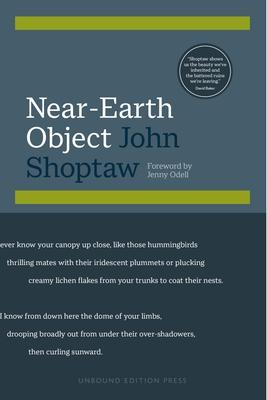In the poems of Near-Earth Object, John Shoptaw explores the interactions, sometimes dark and sometimes joyful, between humans and the non-human natural world. Resisting the human exceptionalism that in its many forms blocks our imaginative access to the world, Shoptaw entertains the perspectives of a host of others: a cricket, a bat, a nuthatch, a carnival bear, a tree's shade, cherubim, an asteroid, and -- in the long poem "Whoa!" (an allegory of climate change based on the myth of Phaethon) -- Earth herself. His descriptions bring to bear knowledge drawn from many sources (life and physical sciences, poetry, philosophy, conversations) as well as his own attentive experience of the world (birds at the feeder, creek-side fox squirrels, Pacific harbor seals). Along with these shifting viewpoints and scales, the poems assume various forms: anaphoric verse, poulter's measure, a seasonal "quartina," a shaped poem. Everywhere Shoptaw attends to the musical contours and momentums of his phrases, lines, sentences and stanzas.
Across the collection, Shoptaw takes up difficult and painful topics (global meltdown, animal abuse) without ever giving up either pleasure or hope. Throughout, he practices what he calls a poetics of impurity. Wary of absolutes (apocalyptic finality, unshakable optimism, utter despair), he makes the best of things in the messy world of the relative, the partial, the gradual, and the mixed.
